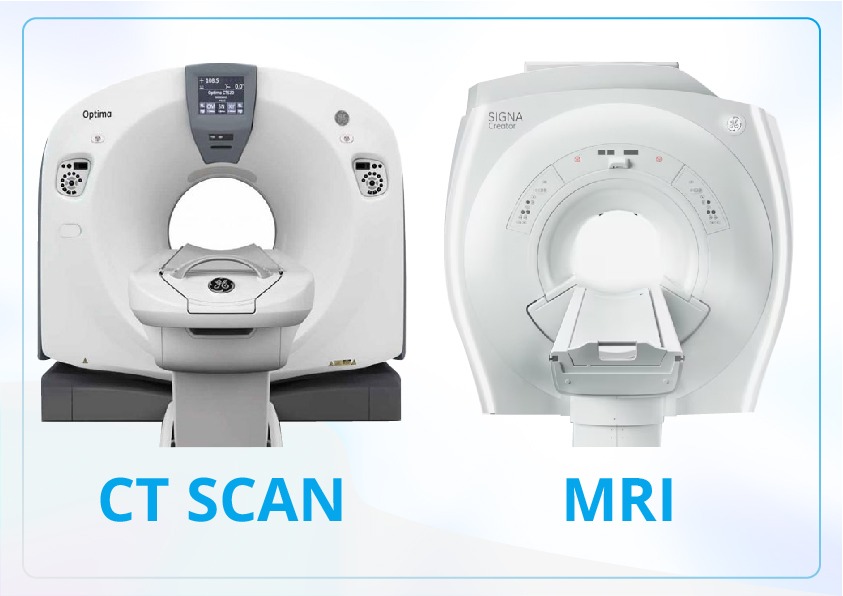What are the differences between CT scan and MRI?
23.10.2024, by Dr Tan Shung You

|
Computed Tomography (CT) |
Magnetic Resonance Imaging (MRI) |
|
|---|---|---|
|
Technology |
CT uses X-rays to create detailed images of the body's internal structures. It takes multiple X-ray images from different angles and uses computer processing to create cross-sectional images (slices). |
MRI uses strong magnets and radiofrequency waves to produce detailed images of organs and tissues. It does not involve ionizing radiation. |
|
Imaging Detail |
CT is particularly good for imaging bones, internal organs, bowels, lungs and also detecting bleeding. It provides excellent detail for acute injuries and conditions. |
MRI is better for soft tissues, such as the brain, muscles, ligaments and tendons. It provides high contrast images, making it ideal for neurological and musculoskeletal imaging. |
|
Speed |
CT scans are generally faster, often completed in a matter of minutes. |
MRI scans typically take longer, often 30 minutes to an hour, depending on the body part imaged, due to the need for detailed imaging and multiple sequences required. |
|
Safety |
CT involves exposure to radiation, which poses a small risk, especially with repeated scans. |
MRI is generally considered safe and does not use radiation, but it is not suitable for patients with certain implants (e.g cardiac pacemakers) due to the magnetic field. |
|
Cost |
CT scans tend to be less expensive than MRI scans, though costs can vary based on location and specific circumstances. |
|




